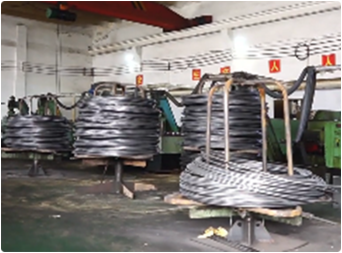Dec . 15, 2024 02:25 Back to list
300mm Threaded Rod for Versatile Construction and DIY Applications
Understanding 300mm Threaded Rods Applications and Specifications
Threaded rods are a versatile and essential component in various industries, ranging from construction to manufacturing. Among the different specifications available, the 300mm threaded rod is particularly popular due to its manageable length and adaptability. This article will explore the characteristics, applications, and considerations surrounding the use of 300mm threaded rods.
What is a Threaded Rod?
A threaded rod, also known as a stud or a screw rod, is a long piece of metal that has continuous threads along its entire length. These rods are typically made from materials such as stainless steel, mild steel, or alloy steel, providing a range of mechanical properties suited for different applications. The primary purpose of threaded rods is to fasten or connect objects together in a secure manner.
Specifications of 300mm Threaded Rods
The designation 300mm refers to the length of the rod, which is approximately 11.8 inches. This length is often ideal for a variety of tasks, as it strikes a balance between being long enough to accommodate different fastening needs while still being manageable for assembly and handling. Threaded rods can come in various diameters and thread pitches, which affect their load-bearing capabilities. Common diameters for threaded rods include M6, M8, M10, and M12, and the choice of diameter will depend on the specific application and the load requirements.
In addition to length and diameter, the material of the threaded rod is also crucial. For instance, stainless steel rods are favored in environments that require resistance to corrosion, while carbon steel rods may be selected for their strength and cost-effectiveness in indoor applications.
Applications of 300mm Threaded Rods
The versatility of 300mm threaded rods leads to their use in a wide range of applications
1. Construction In the construction industry, threaded rods serve as essential fasteners for steel structures, providing stability and support. They are often used in conjunction with nuts and washers to anchor beams and other structures securely.
300mm threaded rod

2. Manufacturing In manufacturing settings, 300mm threaded rods are employed in jigs, fixtures, and assemblies. Their adjustable length allows for flexibility in design and can accommodate different manufacturing needs.
3. Automotive Threaded rods are also common in automotive applications, where they are employed to secure various components in place, ensuring that vehicles operate safely and efficiently.
4. Furniture In furniture assembly, 300mm threaded rods can be used to assemble furniture frames, providing a strong connection between parts that can withstand considerable loads.
5. DIY Projects For hobbyists and DIY enthusiasts, 300mm threaded rods are widely used in craft and home improvement projects, offering a reliable means to create structures or secure components together.
Considerations When Using Threaded Rods
When selecting a 300mm threaded rod for your project, there are several factors to consider
- Load Requirements Assess the weight and stress that the rod will need to support. Choose a diameter and material that can handle the expected loads.
- Environmental Conditions Consider whether the rod will be exposed to elements such as moisture, heat, or chemicals. This will influence the choice of material—stainless steel for corrosion resistance, for example.
- Thread Type and Size The choice of thread type (e.g., coarse vs. fine) can affect how well the rod will hold in various materials, so be sure to select the right one based on your application.
In conclusion, 300mm threaded rods are invaluable in a multitude of industries due to their strength, versatility, and ease of use. Understanding the specifications and applications of these rods will aid in making informed decisions for construction, manufacturing, automotive, and other projects. Whether you are a professional or a DIY enthusiast, threaded rods can provide the necessary support and stability to meet your fastening needs.


